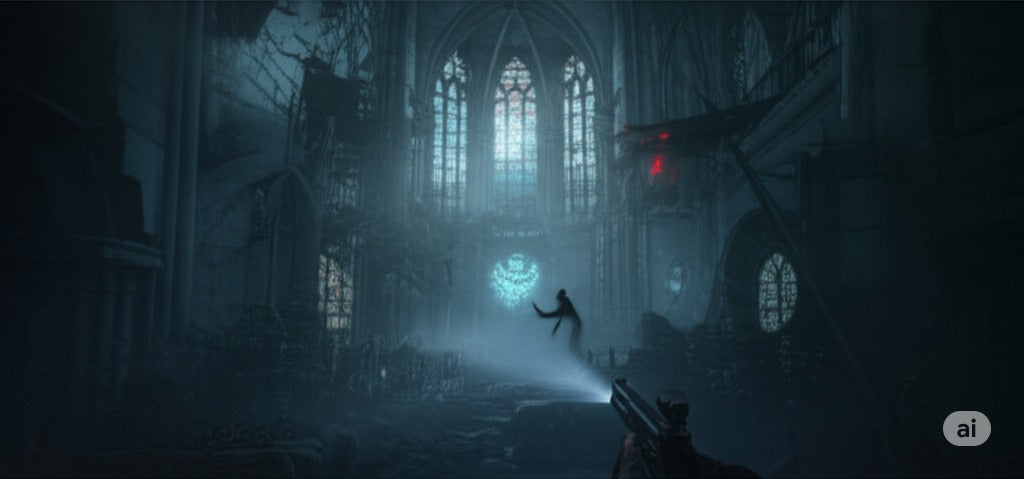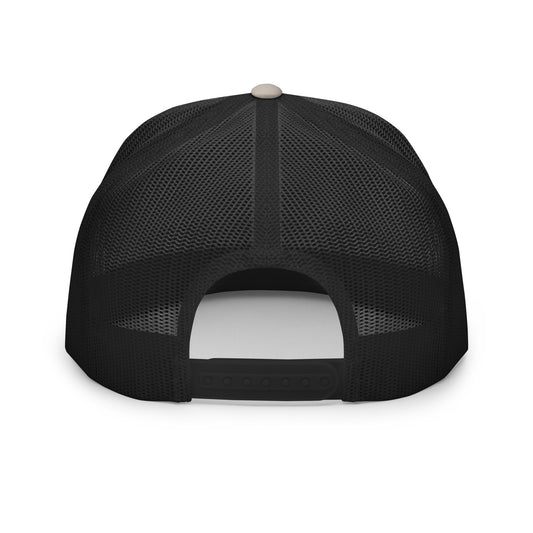
GUIDE: All Secrets Tips and Tricks for Resident Evil 9: Requiem
Joshua BrunhoffMastering Resident Evil 9: Requiem - A Zero-to-Hero Master Class
Welcome, aspiring survivor, to the ultimate training manual for Resident Evil 9: Requiem. This master class is designed to take you from a terrified newcomer to a seasoned veteran, capable of unraveling every mystery, conquering every horror, and finding every hidden secret that Requiem holds. Forget simply surviving; we're here to master the art of fear.
Introduction: The Philosophy of Fear and Mastery
Resident Evil 9: Requiem is not just a game; it's an experience. It will test your nerves, your resourcefulness, and your wit. Unlike typical action games, Requiem thrives on scarcity, tension, and strategic thinking. Being the "best" player doesn't just mean having perfect aim; it means understanding the game's systems, exploiting its mechanics, and embracing its atmosphere.
This guide is structured to gradually build your knowledge, starting with the absolute fundamentals and progressing to the most obscure secrets and advanced strategies.
Part I: The Fundamentals of Survival (The Initiate's Path)
Before you can master, you must survive. This section covers the absolute essentials for anyone picking up Requiem for the first time.
A. Core Gameplay Loop: Explore, Fight, Solve, Manage
-
Exploration: Your primary mode of interaction. Look everywhere. Seriously. Check behind objects, under tables, in every corner. Many items, files, and secrets are hidden in plain sight or behind environmental interaction.
-
Combat: Often avoidable, sometimes necessary. Understand when to fight and when to run. Ammo is precious.
-
Puzzle Solving: Requiem is riddled with environmental and item-based puzzles. Pay attention to clues in files, audio logs, and the environment itself.
-
Resource Management: This is the beating heart of Resident Evil. Every bullet, every herb, every craftable component matters.
B. Controls & Interface (Basic Awareness)
-
Movement: Standard WASD/Left Stick. Learn to sprint and crouch. Crouching often reduces detection and allows access to small passages.
-
Interaction: A single button (usually 'E' or 'A'/X). Learn to hold it down for prolonged interactions like opening heavy doors or examining complex objects.
-
Inventory: The most crucial menu. Learn to navigate it quickly. Combine items, equip weapons, use healing items.
-
Map: Crucial for navigation and tracking your progress. Uncovered areas are marked, and often, inaccessible pathways or locked doors are noted. Red rooms mean uncollected items remain. Blue means cleared.
-
The "Vigilance Mode" (New Mechanic): Requiem introduces a unique "Vigilance Mode" (activated by holding down a specific button, e.g., 'Q' or Left Bumper). This highlights interactive objects, subtle clues, and enemy weak points in a limited radius. Use it frequently, especially in new areas or when stuck on a puzzle.
C. Inventory Management: The Art of Scarcity
-
Limited Space: Your inventory is finite. Prioritize essential items (healing, ammo for primary weapon, key items).
-
The Storage Box: Found in safe rooms. Use it to store excess items. Don't hoard! If you have 5 stacks of handgun ammo but only use handguns rarely, store some.
-
Combining Items: Herbs + Herbs = stronger healing. Gunpowder + Scraps = ammo. Experiment! Read item descriptions.
-
Key Items: These usually have their own dedicated inventory slot and don't take up space. Don't discard them unless prompted.
D. Health & Healing: Staying Alive
-
Health Bar/Indicator: Pay attention to its color and state. Red means critical, yellow means caution.
-
Healing Items: Green Herbs (basic heal), First Aid Meds (stronger heal), Chem Fluids (often for crafting). Learn to assign healing items to quick slots for immediate use.
-
The "Adrenaline Burst" (New Mechanic): If your health drops to critical, Requiem may grant a temporary "Adrenaline Burst" buff, slowing down time slightly and increasing your critical hit chance. Use this window wisely to escape or land a crucial shot.
E. Saving Your Game: Strategic Respite
-
Safe Rooms: Marked by a Storage Box and often a typewriter/tape recorder. These are safe havens where enemies cannot enter. Always save when you find one.
-
Auto-Saves: While convenient, don't rely solely on them. Manual saves give you control over your progress.
-
Multiple Save Slots: Use them! If you get stuck in an unwinnable situation, you can revert to an earlier save.
F. Difficulty Settings: Choose Your Challenge
-
Casual/Standard: Recommended for first-time players. Allows for more forgiving combat and ample resources.
-
Hardcore/Veteran: For experienced players. Fewer resources, stronger enemies, tougher puzzles.
-
Nightmare/Requiem: Unlocked after completing the game. Brutal difficulty, resource-starved, enemy placements are often randomized or enhanced. This is where true mastery is forged.
Part II: Combat Mastery: Facing the Darkness (The Survivor's Edge)
Combat in Requiem is less about run-and-gun and more about precision, evasion, and resourcefulness.
A. Know Your Enemy: The Horrors of the Dirge
-
The Choral (Basic Mob): Deformed humanoids, often in groups. Aim for the head for quick kills, or the legs to stun and escape. They are weak to fire.
-
The Echoes (Ranged Threat): Shadowy, spectral entities that fire projectiles. They are immune to physical damage when ethereal. Use "Vigilance Mode" to spot their brief materialization moments. They are weak to electrical damage.
-
The Maestro (Persistent Stalker): A towering, heavily armored creature that slowly pursues you through certain sections. Nearly impervious to front attacks. Target the glowing "Resonance Node" on its back. Stun grenades and environmental traps are your friends. Running is often the best option.
-
Environmental Weaknesses: Some enemies can be instantly killed or heavily damaged by baiting them into environmental hazards (collapsing structures, electrical conduits, volatile barrels).
B. Weaponry: Your Tools of Deterrence
-
Handgun: Your bread and butter. Conserve ammo. Good for headshots on basic enemies.
-
Shotgun: Devastating at close range. Ideal for grouped enemies or taking down more resilient foes quickly.
-
Assault Rifle/SMG: Good for sustained damage, but chews through ammo quickly. Use against faster enemies or bosses.
-
Grenade Launcher (Explosive/Flame/Shock Rounds): Versatile and powerful. Reserve for tough enemies or breaking through obstacles.
-
Magnum: Extreme power, very rare ammo. Save for bosses or the toughest mini-bosses.
-
Melee Weapons: Limited durability, but can be used for quick escapes or finishing off downed enemies to conserve ammo.
-
Weapon Upgrades: Found as blueprints or purchased from safe room vendors. Prioritize damage, capacity, and reload speed. Stability is good for new players.
C. Strategic Engagement: Precision and Evasion
-
Aim for Weak Points: Most enemies have them (head, glowing sacs, exposed flesh). Use "Vigilance Mode" to identify.
-
Leg Shots: A great way to stun enemies, allowing you to run past, reposition, or land a follow-up headshot.
-
Stun Grenades: Excellent for crowd control or creating an opening against tough enemies.
-
Evasion: Learn enemy attack patterns. Dodge (if available) or simply backpedal/run to avoid damage. Don't stand your ground against multiple enemies.
-
Blocking/Parrying (New Mechanic): A well-timed block (usually a dedicated button press) can negate damage and sometimes stagger an enemy, opening them up for a counter-attack or quick escape. Mastering this is key for higher difficulties.
D. Boss Encounters: Patterns and Perseverance
-
Observe Patterns: Every boss has distinct attack phases and tells. Spend the first few minutes observing before committing heavily to attacks.
-
Exploit Environment: Many boss arenas have interactive elements that can be used to your advantage (cover, traps, explosives).
-
Resource Management: Go into boss fights fully stocked. If you die repeatedly, try a different weapon loadout or conserve more ammo leading up to the fight.
Part III: Exploration & Puzzle Solving: Unveiling the Lore (The Investigator's Mind)
Requiem is a story-rich experience, and uncovering its narrative through exploration and puzzles is vital to mastery.
A. Environmental Awareness: Look, Listen, Learn
-
Visual Cues: Look for flickering lights, subtle glows, unusual textures, or torn pages. These often indicate hidden items, interactables, or clues.
-
Audio Cues: The game uses sound masterfully. Listen for enemy footsteps, subtle whispers, dripping water (often near secrets), or the distinct chime of a hidden collectible nearby.
-
Backtracking: Often, new items or abilities will allow you to access previously unreachable areas. Don't be afraid to revisit old locations.
B. Item Interaction: More Than Meets the Eye
-
Rotate Objects: In your inventory, you can often rotate key items. Look for hidden buttons, inscriptions, or compartments that reveal a secret.
-
Files & Documents: Read everything. Files provide crucial lore, puzzle hints, and sometimes even direct instructions for finding secrets or side quests.
C. Puzzle Mechanics: Logic and Observation
-
Symbol Matching: Common RE puzzle type. Find symbols in the environment to match a locked mechanism.
-
Deciphering Cryptic Texts: Some puzzles require you to piece together fragmented notes or translate a strange language (often found in files).
-
Environmental Manipulation: Turning valves, moving objects, activating machinery in a specific sequence.
-
Memory Puzzles (New Mechanic): Requiem introduces "Memory Echoes" where you must interact with ghostly projections in a specific sequence or from a certain angle to reveal a hidden path or item. Use "Vigilance Mode" to find the initial trigger point.
D. Mapping & Navigation: Know Your Domain
-
Map Symbols: Learn what each symbol means (locked doors, uncollected items, vendors, save points).
-
Route Planning: Before entering a dangerous area, plan your escape route or identify choke points.
-
Hidden Areas: The map often reveals hidden rooms or passages as empty, uncolored spaces. Look for ways to access them.
Part IV: Resource Management: The Art of Scarcity (The Alchemist's Touch)
Even with skill, a lack of resources will doom you. Mastering resource management is paramount.
A. Ammunition: Every Bullet Counts
-
Prioritize: Only carry ammo for the weapons you frequently use. Store the rest.
-
Crafting: Utilize the "Alchemical Bench" (found in safe rooms) to craft ammo. Prioritize the type you need most. Don't craft unless you genuinely need it; you might find it elsewhere.
-
Melee/Blocking: Learn to rely on these options to save ammo.
B. Healing Items: Self-Preservation
-
Stacking: Combine multiple green herbs for a stronger mixture.
-
Emergency vs. Precautionary: Don't heal for minor damage. Save healing for critical situations or before known tough encounters.
-
Crafting: Chem Fluids are often used to craft First Aid Meds.
C. Crafting: Optimizing Your Supplies
-
Scraps: The primary crafting material. Found everywhere. Don't ignore them.
-
Unique Components: Some items require rare components (e.g., "Miasma Glands" for advanced explosives).
-
Strategic Crafting: Craft what you need now, not what you might need later. Adapt to your situation.
D. Currency & Upgrades: Investing in Survival
-
Resonance Cores: Requiem's primary currency. Found by defeating enemies, selling treasures, or hidden in the environment.
-
The Archivist (Vendor): Found in safe rooms. Sells weapons, upgrades, and sometimes unique items.
-
Prioritize Upgrades: Early game, focus on handgun damage and capacity. Later, invest in your preferred secondary weapon (shotgun or rifle). Don't forget defense upgrades for your character!
E. Storage Boxes: Your Personal Vault
-
Organize: A cluttered box makes it harder to find what you need.
-
Strategic Use: Deposit items you don't immediately need. Retrieve items as necessary. They are linked globally.
Part V: Beyond the Finish Line: Secrets, Tricks & Lore Uncovered (The Requiem Scholar)
This is where you ascend to true mastery. Finding everything Requiem has to offer.
A. Hidden Collectibles: The Path to 100% Completion
-
Artifacts of Ruin: Ancient relics scattered throughout the game. Often hidden behind puzzles, false walls, or requiring specific items to access. They reveal deep lore about "The Dirge" and the game's world. Listen for a faint, ethereal chime when nearby.
-
Memory Fragments: Small, glowing shards. Interacting with them triggers a short audio/visual snippet, revealing backstory for the protagonist or key NPCs. They can be incredibly well-hidden, often requiring "Vigilance Mode" to spot faint glows.
-
Cryptic Files: Beyond standard lore files, these are highly encrypted documents. Finding them often unlocks new side quests or reveals locations of major secrets. Some require a specific "Decryption Device" found late in the game.
-
Weapon & Upgrade Blueprints: Hidden blueprints unlock powerful new weapons or advanced upgrades at the Archivist's shop. Look for them in locked safes, behind illusionary walls, or as rewards for mini-boss encounters.
B. Weapon & Upgrade Blueprints: Maximize Your Arsenal
-
Unique Weapons: Some areas contain special, unique weapons (e.g., a "Purifier Flamethrower" or "Railgun") that are more powerful than standard variants. Often locked behind complex environmental puzzles.
-
Mastery Unlocks: Achieving certain combat milestones (e.g., "100 headshots with handgun") can unlock unique upgrades or attachments.
C. Secret Passages & Shortcuts: Optimize Your Run
-
Breakable Walls: Look for cracked or discolored walls. Some can be shattered with explosives or powerful melee attacks.
-
Hidden Vents: Small, often overlooked vents that can be crawled through, bypassing entire sections or leading to secrets.
-
Illusory Walls: Certain walls or bookshelves may be illusions. Interact with everything.
-
One-Way Doors/Ladders: Activating these often creates a shortcut back to a previous area, useful for backtracking for collectibles.
D. Advanced Combat Tricks: Pushing the Limits
-
Perfect Parry (Advanced): If you parry an enemy attack at the exact moment of impact, it can result in a powerful counter-attack or leave the enemy stunned for an extended period, allowing for critical follow-up shots. Mastering this elevates your combat immensely.
-
Enemy-Specific Exploits:
-
The Choral: If they grab you, a quick melee counter will conserve ammo and push them away.
-
The Echoes: A shock grenade can temporarily solidify them for a burst of damage.
-
The Maestro: Using a heavy weapon to hit its Resonance Node as it's attacking can trigger a "Stun State" allowing you to reposition.
-
-
Environmental Kills: Lure enemies into electrical hazards, falling debris, or explosive barrels. This conserves all your ammo.
-
Ammo Scavenging: Downed enemies sometimes drop ammo. If you're critically low, finish them with a quick melee to save a bullet and hope for a drop.
E. Easter Eggs & Lore Deep Dives: Connecting the Universe
-
Classic RE Character Nods: Look for subtle references: a photograph of a red-jacketed hero, a report mentioning "The R.P.D. Incident," a hidden document signed by a familiar BSAA operative.
-
Umbrella/Tricell Symbolism: Hidden logos or documents alluding to the nefarious corporations from previous games.
-
Meta References: Sometimes the developers hide jokes or references to game development, previous Resident Evil titles (e.g., a "Beware of the Dog" sign), or even the game's fictional development studio.
-
Post-Credit Scenes/Secret Endings: Requiem is rumored to have multiple endings. Achieving the "true" ending usually requires collecting all Artifacts of Ruin and Cryptic Files.
F. Post-Game Content: The True Challenge
-
New Game+ (NG+): Carry over your weapons, upgrades, and currency. Play on a harder difficulty for a fresh challenge.
-
"Requiem Challenge" Mode: Unlocked after completing the game on Nightmare. Features extreme enemy density, randomized item drops, and a perma-death option.
-
Bonus Weapons/Outfits: Often unlocked by completing the game on certain difficulties or achieving specific high scores.
-
The "Dirge Arena": A survival mode where you face endless waves of enemies. Master it for unique rewards and bragging rights.
Part VI: The Mindset of a Master Player
Beyond mechanics, the best players possess a specific mindset:
-
Patience: Don't rush. Rushing leads to mistakes, wasted ammo, and unnecessary damage.
-
Persistence: You will die. Learn from each death. Adapt your strategy.
-
Adaptability: If a strategy isn't working, change it. Try a different weapon, a different route, or a different puzzle approach.
-
Embrace Fear: Resident Evil 9: Requiem is designed to scare you. Acknowledge the fear, but don't let it paralyze you. Use it to heighten your senses.
-
Resourcefulness: Make do with what you have. If you're out of ammo, use melee. If you're low on healing, avoid combat.
-
Observation: Pay meticulous attention to details in the environment, enemy behavior, and file entries.
Conclusion: Your Journey to Requiem Mastery
You now possess the foundational knowledge to embark on your journey to becoming the best Resident Evil 9: Requiem player. Remember, mastery isn't achieved overnight. It requires practice, dedication, and a willingness to confront the darkness within the game and within yourself.
Go forth, survivor. The echoes of the Dirge await.














